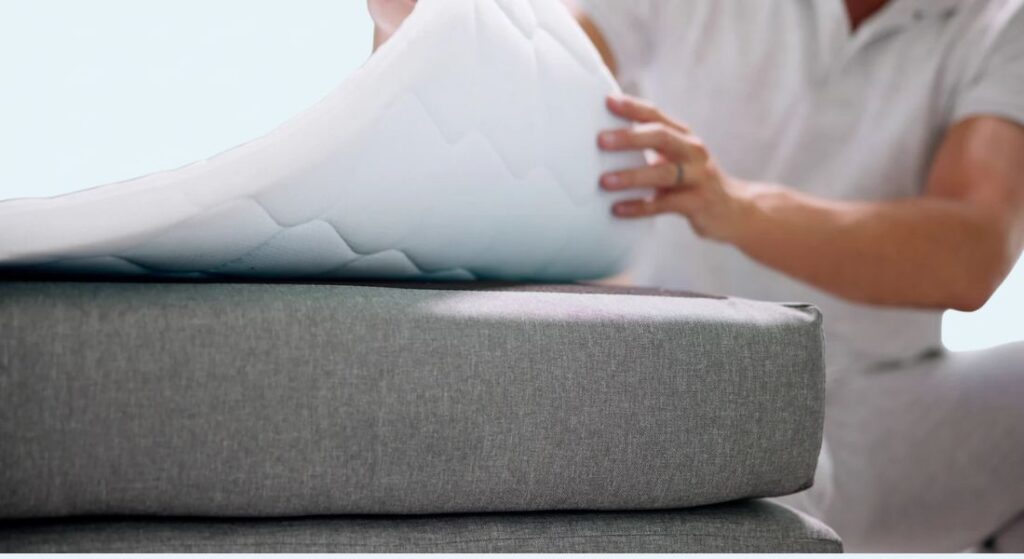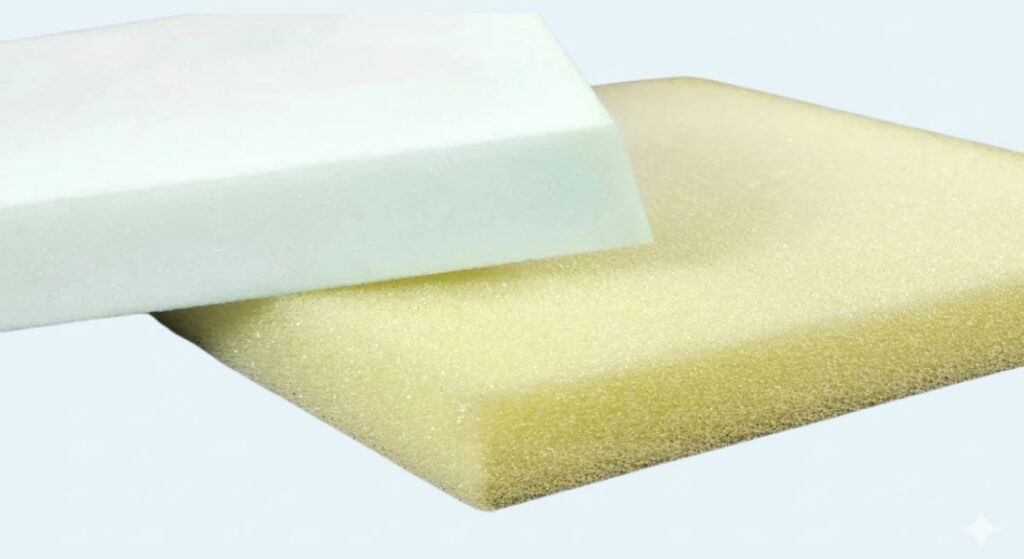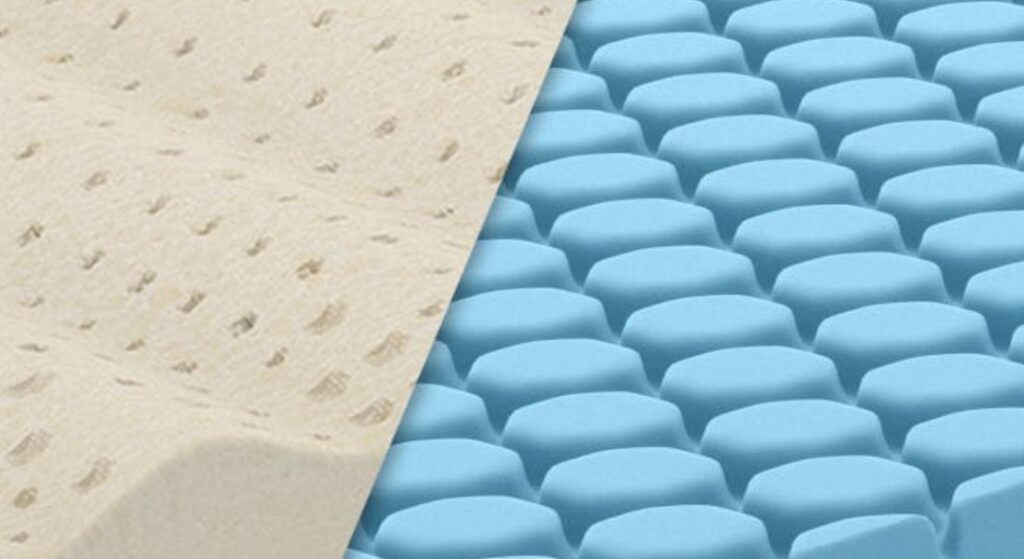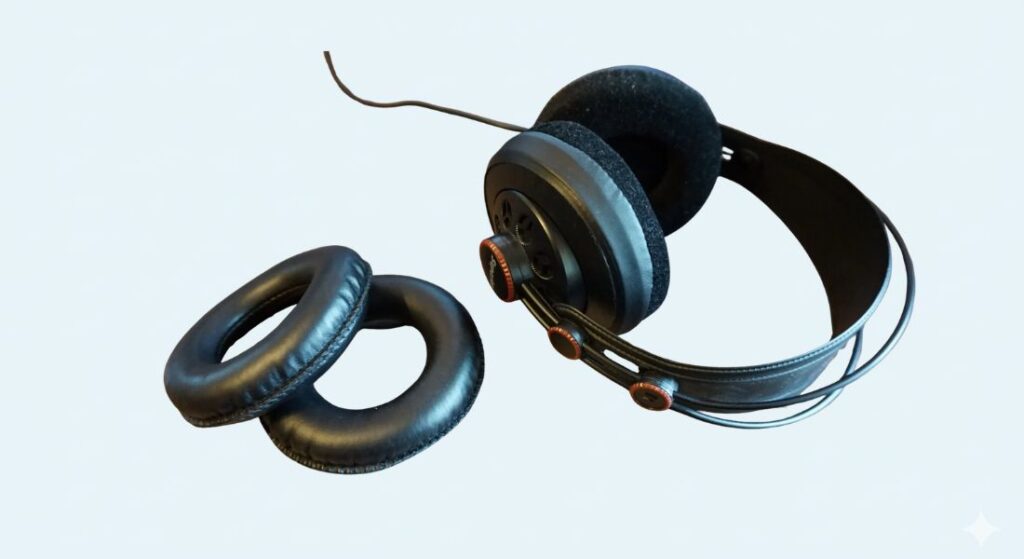You sink into your mattress after a long day, feeling the foam mold perfectly to your body. Hours later, you get up and watch it slowly return to its original shape—like it never knew you were there. But why do we call this miracle material memory foam? The answer isn’t about cognitive recall but a brilliant marketing translation of NASA’s space-age technology. This seemingly simple name hides a fascinating journey from obscure engineering jargon to a $10 billion global industry standard.
The term “memory foam” entered everyday language in the early 1990s, yet NASA scientists never used it during their 1966 breakthrough. Instead, engineers described their temperature-sensitive cushioning as “slow spring-back foam”—a mouthful that failed to capture its magical shape-recalling ability. Discover exactly how marketers transformed technical limitations into a consumer-friendly name that perfectly explains why your mattress feels like it “remembers” you.
NASA’s “Slow Spring-Back” Foam Wasn’t Space-Age Magic
NASA engineers Charles Yost and Chiharu Kubokawa faced a life-or-death challenge in 1966: protect astronauts from crushing G-forces during rocket launches. Their solution—a dense, open-cell polyurethane foam—behaved unlike any cushioning material on Earth. When pressed, it deformed slowly under pressure instead of bouncing back instantly. Official NASA memos from 1966-1970 consistently called it “slow spring-back foam” or “temper foam,” with “temper” referencing its temperature-dependent softening.
Why “Slow Spring-Back” Failed Consumers
This technical name described the foam’s sluggish rebound but missed its most marketable trait: its ability to temporarily hold your body’s imprint before recovering. Early adopters in the 1980s struggled to explain why this foam felt different. Sales materials overloaded consumers with terms like “viscoelastic polyurethane” while showing handprints slowly fading from foam blocks. The disconnect was obvious—people didn’t care about polymer chains; they cared that the foam “remembered” their shape.
The Critical Temperature Link
NASA’s “temper foam” name actually held a clue marketers later exploited. The foam’s responsiveness changed dramatically with heat:
– At room temperature, it felt firm and slow to react
– When warmed by body heat, it softened significantly within 30 seconds
– Cooling restored its original density
This temperature sensitivity (the “temper” in NASA’s name) was essential for the “memory” effect. Without body heat softening the material, it couldn’t mold to your contours or slowly rebound.
How Marketers Turned Physics Into “Memory”
Swedish company Fagerdala World Foams held the key patent when they launched Tempur-Pedic mattresses in 1991. Their marketing team faced a wall of technical confusion. Focus groups rejected terms like “slow-recovery foam” as negative—nobody wants slow comfort. Then came the breakthrough demonstration that changed everything.
The Handprint Commercial That Changed Everything
Early 1990s TV spots featured a simple, mesmerizing sequence:
1. A hand presses firmly into a foam block
2. The imprint holds perfectly for 5 full seconds
3. In slow motion, the depression gradually vanishes
The voice-over delivered the killer line: “This mattress remembers your shape.” No engineering degrees required—consumers instantly grasped why “memory” described the foam’s behavior. Within 18 months, “memory foam” became the universal term, replacing NASA’s jargon in patents, retail catalogs, and living rooms worldwide.
Why “Memory” Beat Scientific Accuracy
Psychologists confirmed the term’s brilliance:
– Familiar metaphor: Everyone understands “memory” as recalling past states
– Positive connotation: Suggests personalized comfort (not “slow” or “sticky”)
– Visual proof: Handprint demos provided undeniable evidence of the “memory” effect
Competitors tried alternatives like “space foam” or “NASA foam,” but these failed to explain the core benefit. Memory foam didn’t just come from space—it worked like nothing else on Earth.
The 3 Physics Secrets Behind the “Memory” Effect
Your memory foam isn’t actually thinking—it’s obeying precise physical laws that create the illusion of recollection. Three mechanisms combine to produce that signature slow rebound:
Why Memory Foam Doesn’t Snap Back Like Regular Foam
| Foam Type | Rebound Speed | Key Structural Difference |
|---|---|---|
| Memory foam | 5-30 seconds | Open-cell structure with viscous polymer chains |
| Regular polyurethane | <1 second | Closed-cell structure with elastic polymers |
| Latex foam | 2-3 seconds | Rubber-based elasticity without viscous damping |
This delay isn’t a flaw—it’s the entire point. The slow recovery allows continuous pressure redistribution, eliminating painful pressure points.
How Temperature Activates the “Memory”
Memory foam’s magic only works at body temperature. Here’s what happens when you lie down:
1. Heat transfer: Your body warms the contact area to 86-95°F (30-35°C)
2. Molecular shift: Polymer chains loosen, reducing viscosity by 70%
3. Contour molding: Foam flows to match every curve for 30-60 seconds
4. Cooling recovery: As foam cools, chains re-entangle, “remembering” original shape
Pro Tip: In cold bedrooms (<65°F), memory foam feels harder and slower to respond. Pre-warm your mattress with a heating pad for optimal molding.
Global Adoption Proved the Name’s Power
The term “memory foam” crossed language barriers effortlessly because the concept transcended culture. Unlike technical terms that get lost in translation, “memory” worked universally:
- Spanish: espuma con memoria (literally “foam with memory”)
- Japanese: メモリーフォーム (direct phonetic copy)
- German: Memory-Schaum (keeping “memory” as a loanword)
- French: mousse à mémoire de forme (“shape-memory foam”)
Even scientific journals abandoned “viscoelastic polyurethane foam” by 1998. A search of academic papers shows “memory foam” citations surpassing technical terms by 2003—proof that when consumers name a product, scientists follow.
Why Early Consumers Got It Wrong (And Why It Matters)
Initial marketing oversimplification created dangerous myths:
– ❌ “Memory foam permanently keeps your shape” → Actually returns to factory shape within 1 minute of pressure removal
– ❌ “It’s made from NASA spacecraft seats” → NASA only funded research; commercial versions use modified formulas
– ❌ “All ‘memory foam’ is equal” → Density (4-5.3 lbs/ft³) and ILD ratings determine true performance
Tempur-Pedic’s 1995 clarification campaign saved the industry: “Memory foam temporarily molds to you, then fully recovers—like memory, not a photograph.” This distinction prevented returns from customers expecting permanent indentations.
Why the Name Outlived Its Inventors
NASA engineers never intended this foam for mattresses—it was purely for aircraft seating. When the agency released the patent in 1981, manufacturers struggled for years to make it durable enough for daily use. The “memory foam” name succeeded because it sold the benefit, not the origin:
- ✅ Solves a pain point: Explains why it relieves pressure better than spring mattresses
- ✅ Creates emotional connection: “Your mattress remembers you” feels personal
- ✅ Differentiates instantly: No other foam “remembers” shapes
Even as newer materials like gel-infused foam emerged, “memory foam” became the umbrella term—all because of that perfect naming moment in a 1991 TV studio.
How to Spot Real Memory Foam Today
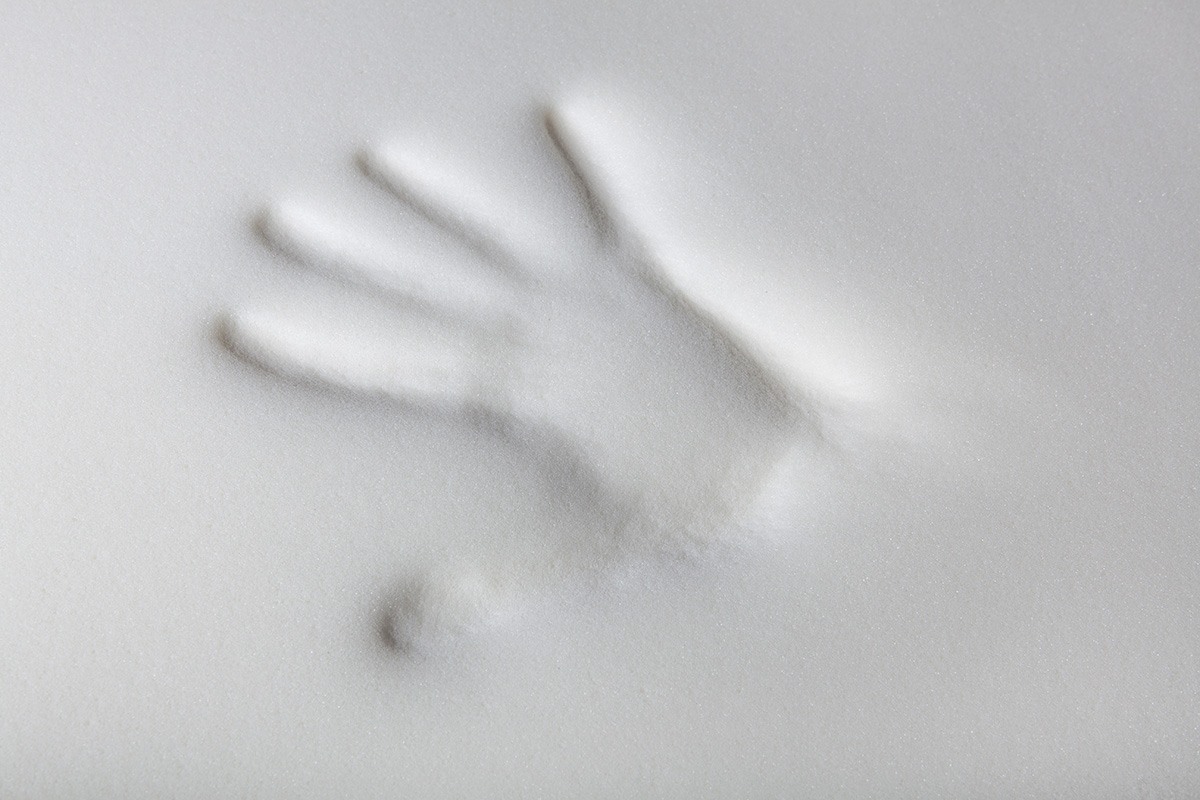
Not all “memory foam” products deliver the true slow-rebound effect. Use these visual tests before buying:
- The Handprint Test: Press firmly for 10 seconds. Genuine memory foam holds the imprint for 5+ seconds before vanishing
- Temperature Check: It should feel noticeably softer after 30 seconds of body contact
- Rebound Timing: Full recovery should take 8-20 seconds (not instant like regular foam)
Warning: If it springs back in under 3 seconds, it’s high-resilience foam—not true memory foam.
Final Note: The next time you sink into memory foam, remember its journey from NASA’s “slow spring-back” lab notes to your bedroom. That perfectly timed handprint demo didn’t just sell mattresses—it gave us a vocabulary to understand complex physics through human experience. The name stuck because it turns invisible molecular behavior into something we all know: the comforting feeling of being remembered. Keep your foam clean and cool to preserve its “memory” for years—your body (and sleep quality) will thank you.

